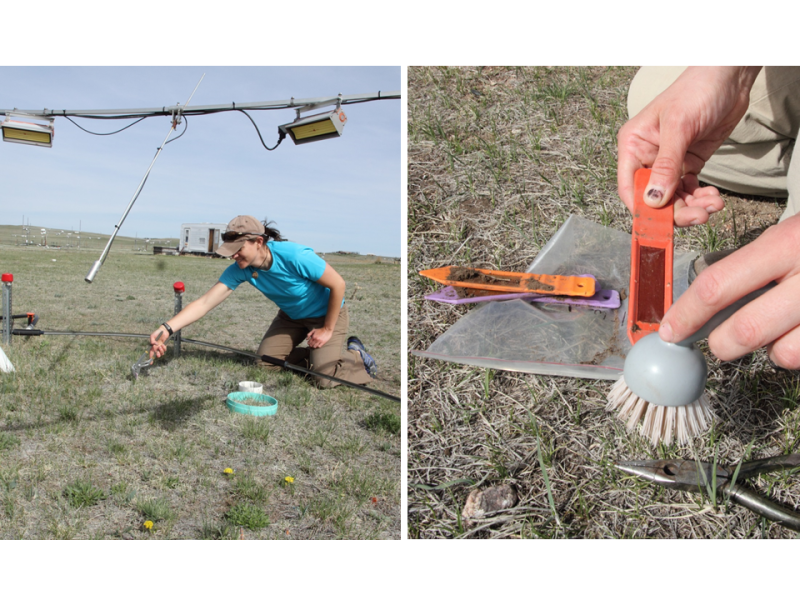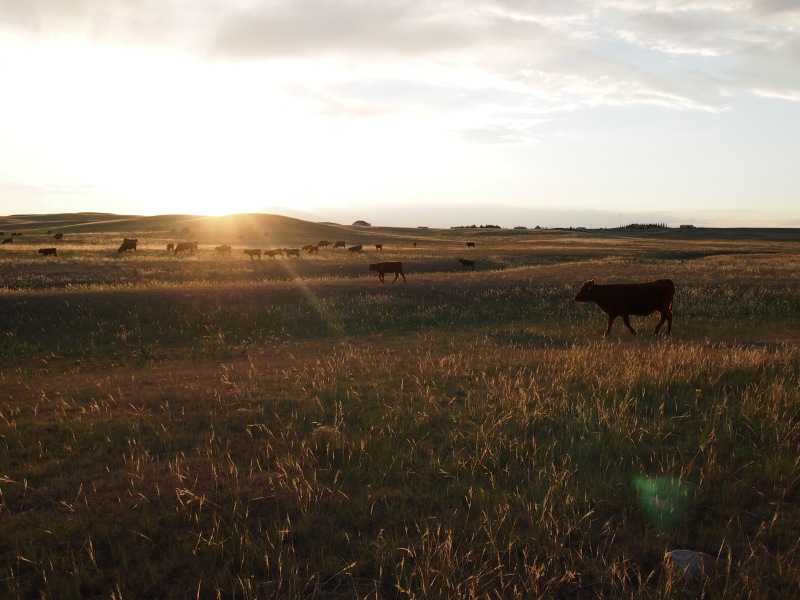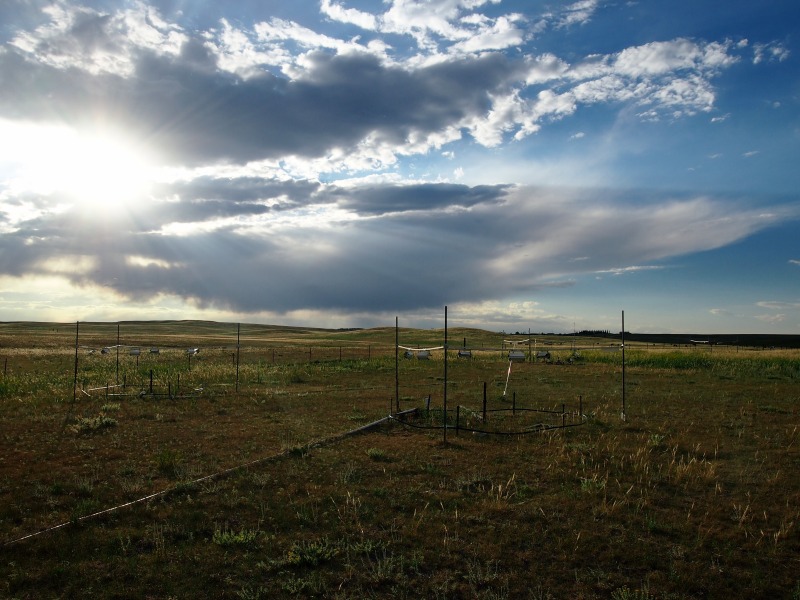
Global change in the arid West, part 2: Unraveling the effects of CO2 and warming on soil nutrients
By Julie Kray & Dana Blumenthal
Semiarid grasslands cover nearly 30% of the land area on Earth, and more than 300,000 km2 across the western United States. Forage production in these grasslands supports much of the world’s livestock, and also provides a host of other ecosystem services, including wildlife habitat and carbon sequestration.
Could increasing CO2 and warming temperatures lead to more plant production, and an increased capacity to sequester carbon in plants and soils in dry grasslands? The answer depends on how these changes affect both water and nutrients, which can co-limit plant production and microbial activity that drives carbon and nutrient cycling. With respect to water, warming increases evapotranspiration, which causes soil to dry, while higher CO2 reduces leaf stomatal conductance, leaving more water in the soil. The net result in semiarid grasslands is that soil water balance may be little affected by combined warming and elevated CO2 concentration1. If this holds true, over longer time frames, the availability of soil nutrients (particularly nitrogen (N) & phosphorus (P)) might largely determine grassland responses to global change. In semiarid grasslands, elevated CO2 and warming could influence soil N & P through their direct effects on microbial and plant activity, and indirectly, via effects on soil water content.
In general, elevated CO2 initially increases plant production, but over time that growth can become limited by nitrogen, as N gets incorporated into plant biomass and soil organic matter more rapidly than it is recycled into available (i.e. inorganic) forms in the soil. This is known as progressive nitrogen limitation (see Luo et al. 2004 BioScience; Luo et al. 2006 Ecology; Finzi et al. 2006 Ecology; Reich et al. 2006 Nature). Like N, phosphorous can limit plant growth, but less is known about what may happen to P availability under future climate conditions.

Dr. Feike Dijkstra and colleagues explored the effects of higher atmospheric CO2 and warmer temperatures on both N and P in a semiarid grassland near Cheyenne, WY, USA, at the Prairie Heating and CO2 Enrichment (PHACE) experiment. At PHACE, climatic conditions predicted to occur late this century are created over present-day mixed-grass prairie: CO2 concentration in the air is increased from 390 (current ambient) to 600 parts-per-million, while temperature is raised 2.5 oF by day and 5.5 oF by night.
At PHACE, elevated CO2 and warming had contrasting effects on N availability. Elevated CO2 decreased soil inorganic N, probably because microbes took up more N2, 3. Higher soil water content under elevated CO2 likely enhanced microbial activity and N demand, but did not affect plant N uptake. Warming, on the other hand, increased both available inorganic N in the soil and plant N uptake. Warmer soil temperatures stimulated greater microbial release of N from soil organic matter, which in turn allowed plants to take up more N. This occurred despite the fact that warming reduced soil water content. Together, CO2 and warming effects on N offset one another, such that N availability was similar under present and future conditions.

Elevated CO2 and warming influenced P differently than they influenced N, due in part to different processes involved in P cycling. In particular, soil water content controls the rate of P dissolution from P-rich minerals, which supplies much of the inorganic P at PHACE. The wetter soil conditions under elevated CO2 increased P availability to plants and microbes relative to that of N, while drier conditions with warming reduced P availability relative to N4. The two global changes again had opposing effects, limiting their combined influence on the relative supply of N and P.
What does all of this mean for semiarid grasslands in a future with warmer temperatures and higher atmospheric CO2? Plant production and carbon storage probably will not increase dramatically in drier grasslands, but for different reasons than researchers have seen in wetter climes. Plants in water-limited ecosystems are less likely to see progressive N limitation with elevated CO2 than plants in more mesic grasslands. Rather, opposing effects of CO2 and warming on water are likely to translate into opposing effects on N and P, and the ratio of available N to P. That said, the fact that water mediates effects of both CO2 and warming on N and P cycling in semiarid grasslands also means that directional changes in water availability are likely to alter N and P availability. Thus, if warmer and drier trends develop as predicted across the western US5, P may become MORE limiting than N to plant growth and microbial activity.
It is important to note that these are results from the first 3 years of the PHACE experiment, and the last 4 years will shed more light on the soil nutrient story. It is possible that progressive nutrient limitation could simply take longer to set in, as more labile pools of N and/or P are exhausted. But the upshot appears to be that plant production and carbon storage in this region may not change substantially with near-term changes in CO2 and warming.
EcoPress will continue to cover new results from the PHACE experiment, so stay tuned here!
Many thanks to Feike Dijkstra, Jack Morgan, and Kevin Mueller for input on this post.
1. Morgan, J.A. et al. 2011. C4 grasses prosper as carbon dioxide eliminates desiccation in warmed semi-arid grassland. Nature 476: 202-206.
2. Dijkstra, F.A. et al. 2010. Contrasting effects of elevated CO2 and warming on nitrogen cycling in a semiarid grassland. New Phytologist 187: 426-437.
3. Carillo, Y. et al. 2012. Controls over soil nitrogen pools in a semiarid grassland under elevated CO2 and warming. Ecosystems 15: 761-774.
4. Dijkstra, F.A. et al. 2012. Climate change alters stoichiometry of phosphorus and nitrogen in a semiarid grassland. New Phytologist 196: 807-815.
5. Seager, R. & Vecchi, G.A. 2010. Greenhouse warming and the 21st century hydroclimate of southwestern North America. Proc. Natl Acad. Sci. USA 107: 21277-21282.

